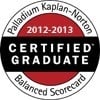I've been told more than once that I could sell ice to an Eskimo. I always found that funny because selling isn't some kind of magic trick you play on people. It's a skill you build, and for me, it started because we were poor, and I wanted things. You'll learn the steps I've used for over 25 years in enterprise sales so you can understand how to sell effectively.
This proven sales process has taken me from selling garden seeds as a six-year-old to closing deals worth millions for complex enterprise software. The funny thing is, the core lessons are the same. This isn't just theory; it's a real framework that shows you how to improve sales, whether you're selling a service or a high-value software solution.
It All Starts with Knowing What You Actually Sell
Most businesses get this wrong right from the start. They think they're selling a product or a list of features. But your potential customers don't buy features; they buy solutions to their problems, and successful salespeople know this.
A good salesperson understands that people buy products to solve a specific need or to achieve a desired outcome. A powerful sales approach involves shifting your focus from what your product is to what it does for the buyer. This mindset is the foundation of effective selling and a solid sales strategy.
When I was an SAP Industry Principal, I was responsible for a huge sales quota across six different industries. To do my job, I had to learn over 1,300 licensable software items. But I wasn't just selling software components; I was selling complete business process solutions using a consultative selling method.
If a business customer in the Defense industry needed a specific logistics process, I had to map their exact pain points back to a complex bundle of software licenses. A mistake could cost millions, which meant I had to truly understand their operations. This taught me that knowing what you sell means understanding the result your customer is trying to achieve.
The Surprising Power of Trust Over Price
You might think price drives every decision, but that's not entirely true, especially in complex sales. The most powerful asset you have is the trust you build with your client, which forms the basis of a strong customer relationship. People make decisions based on emotion and justify them with logic, and trust is a powerful emotional driver.
Building this trust is essential for creating a long-term relationship. It requires a different selling method where relationship management is central. This is more than just good customer service; it's about becoming a credible advisor for your ideal customer.
I've had clients ask me to help them write their Request For Proposal (RFP). Some have even skipped the whole formal RFP process and just asked for my recommendation. Why would they do that? Wasn't that like letting the fox guard the henhouse?
No, because they trusted that my deep knowledge would get them the right answer. They saw me as a partner in their success, not just a vendor trying to sell products. This level of customer relationship management is what separates average sales representatives from top performers.
They knew I understood their business so well that I was on their side of the table. To build trust like this, you must be genuine, listen more than you talk, and always put the customer's interests first. You don't sell by pushing; you guide by understanding.
My Proven Steps on How to Sell Effectively
Over the years, I've refined my experiences into a series of steps. These aren't just abstract ideas. They are practical sales techniques and actions you can start using right away to improve your sales performance and increase sales.
Step 1: Master Your Prospecting
You can't sell to people you can't find. You need a systematic sales approach to prospecting to find your target audience. As a Hubspot partner, I developed a specific method for finding potential customers that our systems showed had visited our company's website but hadn't yet become a contact.
A successful sales strategy involves using multiple sales channels. This could include direct sales outreach, social media engagement, or even traffic to an online store. The key is to have a clear buyer persona, so you don't waste time on leads that are a poor fit for what you're selling.
For my larger SAP enterprise clients, I used Account-Based Marketing (ABM) to map out every key person in a target company. Then, our sales team created marketing and sales messages specifically for each person. You have to find your prospective customer before they even know they need you, which requires a targeted approach.
Step 2: Conduct Deep Discovery, Not Just a Pitch
Before we ever showed a potential SAP client a demonstration, we went through a deep discovery process. The goal wasn't to pitch them; it was to understand them completely. The best sales conversations feel more like consultations than presentations.
Your customers are often worried and maybe a little cynical. They have been disappointed before by a salesperson who didn't listen. Your first job is to build trust by asking thoughtful questions designed to uncover their real challenges and make the customer understand that you are there to help.
This is your most important task: translating what your solution does into the language of your customer. We used questions that focus on their current situation and followed up with problem questions to pinpoint their struggles. This solution selling technique helps the buyer personally connect the dots between their problem and your solution.
If you skip this step, you'll sound like every other salesperson they've met. You will likely lose the deal because customers don't buy from people they feel don't understand them. The goal is to solve problem, not just push a product.
Step 3: Present the Solution, Not the Product
Once you understand their problems, your presentation changes. You're no longer showing off cool features. You're demonstrating exactly how your solution will fix their specific problem and make their life easier.
For very complex software demos at SAP, I often had a team of up to 15 pre-sales consultants helping me. This Virtual Account Team wasn't there to show off. Each person was there to demonstrate a specific part of the solution that directly addressed a pain point we found during discovery.
You must connect every part of your presentation back to the customer's world. This shows you were listening and is a critical part of the consultative selling framework. It also proves you have the answer they have been looking for, which shortens the overall sales cycle.
Step 4: Frame the Value with a Solid Business Case
Customers need to justify their decisions internally. A strong business case that shows a clear return on investment is your best tool. It's not just about what it costs; it's about what it's worth to them and how it impacts their decision-making process.
Building these business cases is a science. Sometimes, the client will push back on your numbers because they want a bigger hammer to drive your price down. A well-crafted business case makes the value proposition clear and helps you defend your pricing with logic.
This is where trust comes back in. They often lack the internal data to build a good case themselves, especially for a system like SAP. When they trust you, they let you help them build the numbers because they know you're creating a realistic case that is mutually beneficial.
Below is a simplified example of how you can frame value. This approach shows how your software saves money and time.
| Value Driver | Current Cost (Annual) | Projected Cost with Solution | Annual Savings |
|---|---|---|---|
| Manual Data Entry Hours | $80,000 | $20,000 | $60,000 |
| Cost of Errors & Rework | $45,000 | $5,000 | $40,000 |
| Time Spent on Reporting | $50,000 | $10,000 | $40,000 |
| Total Annual Savings | $175,000 | $35,000 | $140,000 |
A table like this helps a business customer visualize the financial impact. Buyers who see real, quantifiable value are much more likely to move forward with a purchase, which helps drive sales.
Step 5: Ask for the Right Price and Close with Confidence
Let me tell you a quick story. When I was a kid, we had a rusty old jeep top just sitting in our yard. My uncle asked about it, and my dad told me if I could sell it, I could keep the money.
I set what I thought was a high price: $185. To my surprise, my uncle paid it. The lesson was clear: always ask for what it's worth, maybe even a little more. This doesn't mean you should overcharge people; it means you should be confident in the value you are offering.
If you've done your discovery and built a solid business case, the price becomes a logical conclusion, not a starting point for a fight. When you believe in your price, the prospective customer is more likely to as well. Using professional quoting tools and sending prompt follow-up emails can also help streamline this final stage and help you close deals.
Building a System for Repeatable Success
A single big sale is great, but a stream of them is better. My first sales lesson came from selling garden seeds as a child. The second year, my mom started getting calls from people who bought from me the year before. They were my repeat customers, my first customer base.
This taught me the value of building a system and focusing on long-term relationships. For your business, that means designing a reliable sales process and investing in continuous coaching for your sales teams. Good sales enablement materials give your team the knowledge and tools they need to succeed and refine their sales techniques.
This is why I invested heavily in my own training. I have certifications in SAP Materials Management, Business Warehouse, and Value Engineering, just to name a few. When I became a Hubspot partner, I took every single certification they offered. A company culture that values learning is crucial because you can't train your team on what you haven't clearly defined and mastered yourself.
Your sales strategies should be documented and refined over time. Senior sales professionals should mentor newer team members, passing down effective habits. This is how a small business can scale its sales efforts and how larger enterprises maintain consistency and quality across their sales force.
Conclusion
Learning how to sell effectively is not about becoming a smooth talker. It's about building a process founded on deep knowledge and genuine trust. From selling fall leaves and rocks along a highway in Indiana to closing massive software deals in Dubai, these principles have always held true.
It comes down to truly knowing what you sell, understanding your customer's world, and guiding them to a solution with confidence. You have to show them the value they will get, not just tell them about it. When you adopt these sales strategies, you're not just making a sale; you're starting a partnership.
When you focus on these fundamentals, from defining your buyer persona to building a business case, you will figure out how to sell effectively. This is how successful salespeople build a strong customer base and achieve lasting success. You'll build a career, not just hit a quota.
We are a full-service Hubspot Certified Inbound Marketing and Sales Agency. In addition, we work to integrate your SAP System with Hubspot and Salesforce, where we have a deep delivery capability based on years of experience. Please our book a meeting service to get started.



